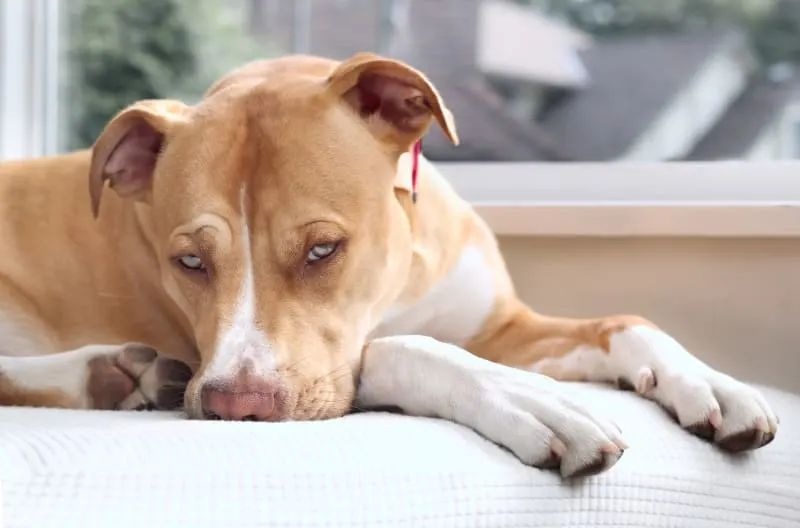Xylitol Poisoning in Dogs – Xylitol, a common sugar substitute found in many household products, can be a major risk to dogs. Although xylitol is safe for humans, even small amounts can be extremely toxic to dogs. Pet owners need to be aware of xylitol-containing products, signs of poisoning, and what to do if exposure does occur. 
What is Xylitol?
Xylitol is a natural sugar alcohol that is used as a sugar substitute in sugar-free and low-carb products. Xylitol has gained popularity because it tastes like sugar, has fewer calories than sugar, and does not result in increases in blood glucose levels in humans. Xylitol is found in –
- Sugar-free gum and candy
- Baked goods
- Toothpaste and mouthwash
- Chewable vitamins
- Some over-the-counter medicines
- Nasal sprays
Although xylitol can be beneficial to humans in several ways, it has a very different impact on dogs.
Why Is Xylitol Poisonous To Dogs?
When a dog consumes xylitol, their pancreas mistakes it for real sugar and releases a huge amount of insulin. This surge of insulin causes a sudden drop in blood sugar levels (hypoglycemia), which can occur within 10 to 60 minutes of consumption. In serious cases, xylitol can also cause liver failure and even death. The toxic dose of xylitol is very low.
As little as 0.1 grams per kilogram of a dog’s body weight can cause hypoglycemia. Liver failure can occur at doses of 0.5 grams per kilogram and above. To put this into perspective, a single piece of sugar-free gum can have up to 1 gram of xylitol, more than enough to harm a small dog.
Symptoms of Xylitol Poisoning in Dogs
The symptoms of xylitol poisoning can present quickly and may include –
- Vomiting
- Weakness or lethargy
- Loss of coordination (ataxia)
- Tremors or seizures
- Collapse
- Coma
- Jaundice (with liver failure)
Because symptoms can show themselves within minutes to a few hours, prompt treatment is essential.
What To Do If You Think Your Dog Has Ingested Xylitol
If you suspect your dog has eaten an item containing xylitol, take action immediately –
- Do not wait for symptoms to develop. Time is of the essence!
- Call your veterinarian or an emergency veterinary hospital.
- You may also contact the Pet Poison Helpline or the Animal Poison Control Center.
- Be prepared to answer questions regarding:
- The product that was ingested
- The quantity that was ingested
- The size and weight of your dog
Do not induce vomiting unless instructed to by a veterinary professional- doing so may make things worse.
Treatment for Xylitol Poisoning
The treatment for xylitol poisoning will be based on how much xylitol was ingested and how fast you were able to receive veterinary treatment. Common treatments include –
- Intravenous fluids to normalize blood pressure and maintain hydration
- IV dextrose (glucose) to help raise blood glucose levels
- Liver protectants and medications to help support liver function
- Monitoring and hospitalization for 12-72 hours, based upon
Dogs treated early often recover completely however, dogs that develop liver failure have a guarded prognosis.
How To Prevent Xylitol Poisoning in Dogs
It is better to prevent a problem than to fix one. Here are some tips to help protect your pet –
- Read labels on food, gum, peanut butter, and oral hygiene products before bringing them into your home.
- Store everything that contains xylitol out of reach of all animals- store it high up in cupboards or keep it in sealed containers.
- Do not use human toothpaste to brush your dog’s teeth!
- Communicate with family and visitors about the risks of feeding a dog human treats or leaving any product where it could be consumed.
Being responsibly proactive can include keeping your pet safe from xylitol poisoning.
Conclusion
Xylitol poisoning in dogs is a severe medical emergency that demands quick and informed action. As a pet owner, it is important to be proactive in keeping xylitol-containing products out of your dog’s reach and knowing what to do in case of an accidental ingestion. Prevention, awareness, and quick response can save your dog’s life.
For more pet safety tips, emergency care guidance, and veterinary help, visit Pet Care Partners. Their professional team is dedicated to helping pet parents make informed decisions about their furry friends’ health before emergencies happen.
FAQs About Xylitol Poisoning in Dogs
How long after eating xylitol will a dog show signs of poisoning?
Dogs can start showing clinical signs of xylitol poisoning in as little as 10 minutes to as long as 60 minutes after ingestion. However, in some cases, the clinical signs of liver failure may take as long as 8-12 hours to present. Since the onset of clinical signs can vary so widely, it’s always best to seek veterinary treatment quickly and as soon as possible, even if you do not see any clinical signs at that time.
Can a small amount of xylitol kill a dog?
Yes. Even a small amount of xylitol can be deadly to dogs. For example, as little as 0.1 grams per kilogram of body weight can trigger hypoglycemia, and just 0.5 grams per kilogram can cause liver damage. A single stick of gum can be toxic to a small dog.
What common foods or products should I watch out for?
Watch for sugar-free products like – Chewing gum, peanut butter, protein bars, toothpaste and mouthwash, medicians labled as sugar-free. Always check labels for xylitol or other sugar alcohols and keep these products safely stored away.
Is xylitol poisoning treatable?
Yes. With quick medical care intervention, xylitol poisoning is treatable. Most dogs recover well if treated before severe symptoms develop. However, if liver damage or seizures occur, treatment starts, the better the result.




